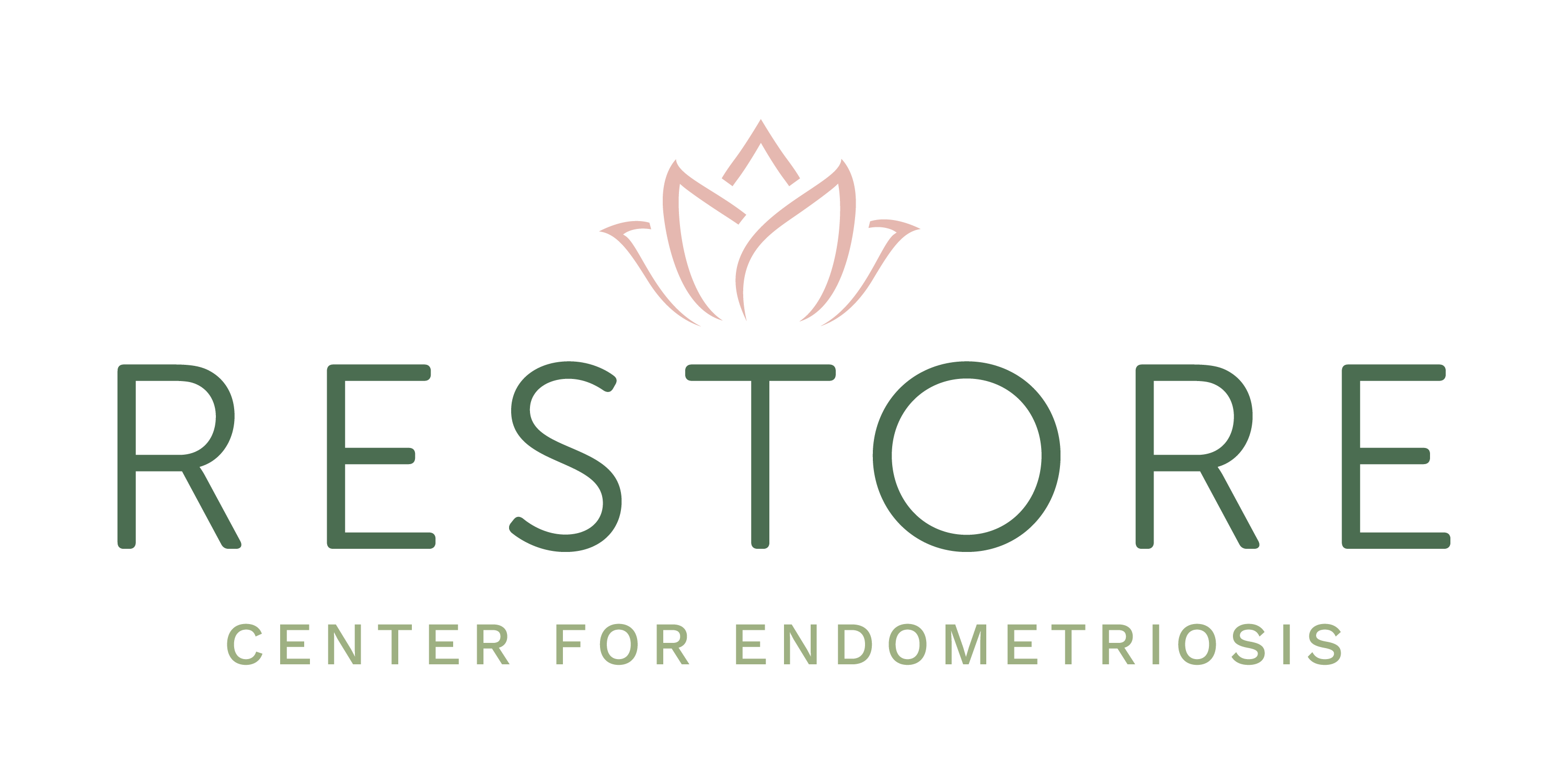Endometriosis Treatment
Start Your Healing Journey

Understanding Endometriosis
Understanding endometriosis and its treatment requires a nuanced approach due to the complexity of the condition. Here's what we know:
Endometriosis manifests differently in each individual, varying in appearance, location, and severity. Its effects can be both localized (pelvic pain) and systemic, affecting multiple organs and systems throughout the body.
Previous treatments may fail due to inadequate surgery, reliance on hormone therapy with significant side effects, or failure to address associated conditions.
Over 90% of women experiencing pelvic pain & infertility have endometriosis.

What is best way to Treat Endometriosis?
For women with endometriosis, researching treatment options is no easy task. To complicate matters, there are many schools of thought and opinions regarding endometriosis treatment, and not everyone is in agreement. Asking “what is the best way to treat endometriosis can result in a range of conflicting answers, some of which are entirely inaccurate. Women are commonly being told everything from taking birth control pills to treat your symptoms, to more drastic measures like pregnancy or hysterectomy as a cure.
An appropriate treatment plan will vary depending on how severe your symptoms are, whether pelvic pain or infertility. It is also important to determine whether health conditions exist that are related to endometriosis. (More on those below.) Overall, the treatment approach is focused on offering ROOT CAUSE treatments for the various sources of pain and factors affecting fertility.
To live a life that is totally free from the symptoms of endometriosis pain, getting your life back and restoring your body back to optimal health requires two things: Vast understanding of the disease, and the competent expertise required to deliver personalized treatment, which comes only through experience.
90% of Women Report Improved Quality of Life After Optimal Excision Surgery.
Endometriosis Treatment
To offer the best treatment, we follow these steps at RESTORE Center For Endometriosis:
Listening to the patient:
We prioritize understanding your unique health history and experiences to tailor treatment plans accordingly.
Comprehensive Examination
Thorough physical, pelvic, and ultrasound exams help map out areas of concern, guide treatment decisions, and surgical planning.
Forming a Plan of Action
Based on findings and patient preferences, we develop personalized treatment plans for root cause treatments that may include surgery and non-surgical approaches.

Optimization of Anatomy at Surgery:
Meticulous, minimaly invasive surgery to achieve optimal excision of ALL visible endometriosis outside the uterus, prevent pelvic adhesions, and to optimize the uterine cavity and fallopian tubes for fertility.
Long-distance consultation
For patients far away, we offer services through remote consultations and follow-ups.
Ongoing Care
We provide continuous support post-surgery and encourage feedback to ensure long-term health and fertility support.
Despite the complexity, we remain dedicated to finding effective treatments for every woman with endometriosis, never giving up on restoring health and well-being. In essence, unraveling the mysteries of endometriosis requires a multifaceted approach, acknowledging the interplay of various factors in its onset and progression.
Learning More About Endo
Pelvic Pain Disorders Possibly Related To Endometriosis
Endometriosis often coexists with other gynecological, immunological, and endocrine disorders, necessitating a comprehensive treatment approach beyond just removing the disease.
The following conditions commonly coexist with endometriosis and present even worse symptoms of pelvic pain:

Photo of Adhesion prevention treatment performed by Dr. Yeung.
- Adhesions- Scar tissue that acts like glue, joining two surfaces of bodily organs together, resulting in severe pain. (read more about adhesions)
- Adenomyosis - when the lining of the uterus grows into the muscular wall of the uterus (read more about Adenomyosis )
- Fibroids - noncancerous growths in the uterus. (read more about Fibroids )
- Interstitial Cystitis (painful bladder syndrome) - often mistaken for a UTI, this is a chronic condition resulting in an inflamed or irritated bladder wall. (read more about Interstitial cystitis)
- Pelvic floor muscle spasm - a common cause of pelvic pain that involves involuntary contractions of the pelvic floor muscles(read more about Pelvic floor muscle spasm )
- Inflammation - Can lead to symptoms of pain, bloating and bowel and bladder symptoms, as well as affect chances for fertility if all the endometriosis has been removed and the anatomy restored.
What Causes Endometriosis?
Despite centuries of searching for answers, the cause of endometriosis remains elusive, prompting consideration of factors influencing both its development and severity. Various theories have emerged to explain its origin and manifestation, aiming to encompass our current understanding of the disease. Typically, the most plausible theory guides treatment strategies and outcomes prediction, subject to revision as new insights emerge.
Endometriosis theories include retrograde menstruation, immune dysfunction, Mülleriosis, stem cell involvement, among others. The complexity of the condition necessitates a comprehensive approach, acknowledging the interplay of genetic, environmental, and physiological factors.
Some of the theories proposed include:
- Genetic factors
- Environmental toxins
- Immune dysfunction theory
- Sampson's theory of retrograde menstruation
- Theory of Mülleriosis
- Embryonic rest theory
- Stem cell theory
- Theories of lymphatic and vascular spread
- Coelomic metaplasia theory
As research progresses, the prevailing theory may evolve or be replaced by competing explanations, reflecting our advancing understanding of this enigmatic disease. Ultimately, unraveling the mysteries of endometriosis requires ongoing scientific inquiry and a willingness to adapt our understanding in light of new evidence.
What are the symptoms of Endometriosis?
Endometriosis may be suspected when a woman experiences pelvic pain, cyclical discomfort, painful intercourse, bowel movements, or urination, along with gastrointestinal symptoms like diarrhea, constipation, nausea, bloating, and abdominal cramps. During a pelvic examination, the patient may report tenderness and pain in specific areas, while the physician might detect nodularity behind the uterus. However, a definitive diagnosis requires surgery, during which biopsies of abnormal tissue are obtained and examined under a microscope to confirm the presence of endometrial-like glands and stroma by a pathologist.

Further Reading: “What are the common endometriosis symptoms?”
-
What Is Endometriosis?
Endometriosis, a prevalent gynecological condition, occurs when tissue resembling the uterine lining (endometrium) grows outside the uterus, triggering inflammation and severe pelvic discomfort. According to the National Institute of Child Health and Human Development (NICHD), it affects approximately 1 in 10 women globally, totaling around 176 million individuals, regardless of age, ethnicity, or socioeconomic background. This disease spans across various life stages, impacting teenagers, mothers, those delaying childbirth, and even women in postmenopause. Its symptoms often lead to a prolonged diagnostic journey, with an average delay of 7 to 10 years from onset.
In this condition, endometrial tissue, containing glands and stroma, migrates beyond its natural location, causing irritation and occasionally bleeding in adjacent tissues. The immune system responds by releasing inflammatory proteins, resulting in swelling and pain. Over time, the formation of scar tissue and adhesions between pelvic organs can further exacerbate symptoms and decrease quality of life for affected individuals.
-
What are the symptoms of Endometriosis?
Endometriosis may be suspected when a woman experiences pelvic pain, cyclical discomfort, painful intercourse, bowel movements, or urination, along with gastrointestinal symptoms like diarrhea, constipation, nausea, bloating, and abdominal cramps. During a pelvic examination, the patient may report tenderness and pain in specific areas, while the physician might detect nodularity behind the uterus. However, a definitive diagnosis requires surgery, during which biopsies of abnormal tissue are obtained and examined under a microscope to confirm the presence of endometrial-like glands and stroma by a pathologist.
Further Reading: “What are the common endometriosis symptoms?”
-
What Causes Endometriosis?
Despite centuries of searching for answers, the cause of endometriosis remains elusive, prompting consideration of factors influencing both its development and severity. Various theories have emerged to explain its origin and manifestation, aiming to encompass our current understanding of the disease. Typically, the most plausible theory guides treatment strategies and outcomes prediction, subject to revision as new insights emerge.
The most common and long-standing theory of endometriosis is the retrograde menstruation theory of Sampson. While this theory does explain some of our observations regarding patients with endometriosis, many other observations are not well explained by this theory, including the low rate of repeat surgery and the low rate of recurrence of the disease after optimal excision. Further, many treatments offered such as hysterectomy and inducing long-term amenorrhea (no periods) are based on this theory, but they do not treat the disease itself.
Other Endometriosis theories include retrograde menstruation, immune dysfunction, Mülleriosis, stem cell involvement, among others. The complexity of the condition necessitates a comprehensive approach, acknowledging the interplay of genetic, environmental, and physiological factors.
Some of the theories proposed include:
- Genetic factors
- Environmental toxins
- Immune dysfunction theory
- Sampson's theory of retrograde menstruation
- Theory of Mülleriosis
- Embryonic rest theory
- Stem cell theory
- Theories of lymphatic and vascular spread
- Coelomic metaplasia theory
As research progresses, the prevailing theory may evolve or be replaced by competing explanations, reflecting our advancing understanding of this enigmatic disease. Ultimately, unraveling the mysteries of endometriosis requires ongoing scientific inquiry and a willingness to adapt our understanding in light of new evidence.
-
Did You Know? Strangest Endo Facts:
- Endometriosis can continue well into your reproductive years, even into menopause? In fact, the oldest documented patient treated for endometriosis was over 80 years old.
- Endometriosis is not limited to just the pelvis, in very rare cases endometriosis has been found in very unexpected locations outside the pelvis, such as the brain, liver, lung, eye and kidney.
- Endometriosis has a long history, with anecdotal reports dating back to 1825 BC in the Kahun Papyrus from ancient Egypt.
- Endometriosis can reportedly affect a wider range of individuals than previously thought, including stillborn female fetuses, girls that have not yet started puberty, and even women born without a uterus.

